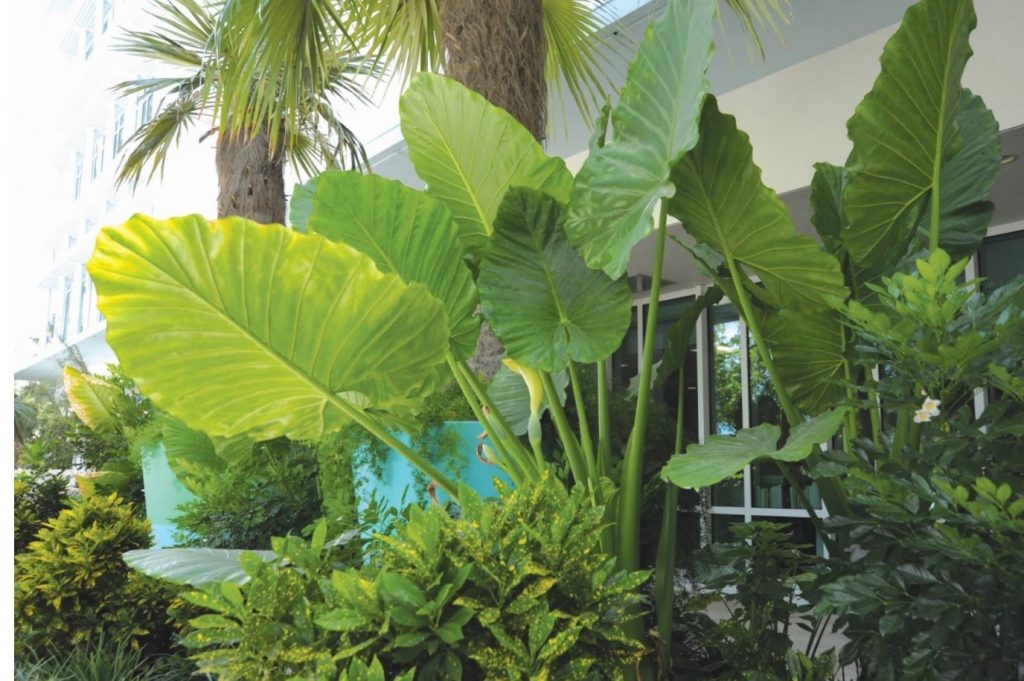

The common name “elephant ears,” when referring to plants, generally refers to two: Alocasia and Colocasia — both of which can be found in and around Camana Bay. They are affectionately named for their heart-shaped leaves that look like an elephant’s ear.
The White Lava cultivar of Colocasia esculenta grows under the fishtail palms near Camana Bay Cinema, and the Borneo Giant cultivar of Alocasia macrorrhiza makes a huge statement in front of 89 Nexus Way and in Heliconia Court.
Colocasia esculenta varieties are a staple to tropical landscapes, where they are excellent for contrasting with colourful tropical flowers. The Alocasia macrorrhiza, on the other hand, demands attention with leaves that can reach five to six feet in height. Borneo Giant is one of the largest Alocasia in the world, and as you approach the plant, you can just imagine what it would be like walking through the rainforests of Borneo surrounded by these giants.
Both members of the Araceae family, Alocasia and Colocasia, are native to tropical Asia and the rainforests of Southeast Asia, and some species are native to India. These plants are both Aroids, a special type of plant whose flower is borne on an inflorescence known as a spadix. More often than not, the spadix is enclosed or wrapped in a spathe which looks like a little hood on the flower. This is a great way to identify all plants in the Araceae family.
Although they may be similar in appearance and from the same plant family, there are several differences in these two elephant ears. The first big difference is in their leaves. Alocasia is usually shiny and stiff, whereas Colocasia are matte and soft.
The two elephant ears have distinctly different ideal growing conditions as well. Alocasia prefers a bit of shade and well-drained soil, while Colocasia like full sun, rich hummus-y soil and can even stand to have “wet feet.” There are many varieties of Colocasia that will grow in standing water, which makes them a perfect addition to an aquatic landscape.
The last and most important difference is that one is edible and one is not. Colocasia (also known as “taro”) creates a tuber than can be eaten many different ways, similar to a potato. In Hawaii, Colocasia is grown commercially for distribution and has a specific epithet: esculenta, which means “edible.” Alocasia is not edible.
This article was originally published in the September 2019 edition of Camana Bay Times.

About the author
Shannon Schmidt is the Horticulture Manager at Dart’s Arboretum Services Ltd. Joining Dart in 2012, Shannon previously worked in parks, public gardens and tourism properties, among others. Originally from the Finger Lakes region of New York State, Shannon loves island life, spending time paddleboarding around the canals and mangroves, in the sea, and spending time outdoors with her two energetic Boston Terriers Nollie and Ebbie and her equally energetic partner Chase! Shannon holds a Bachelor of Science in Recreation, Park and Tourism Management from The Pennsylvania State University and a Diploma in Horticulture from the Longwood Gardens Professional School of Horticulture, and loves spending time swinging in a hammock, with her favourite smoothie from Jessie’s Juice Bar and reading material from Books & Books.